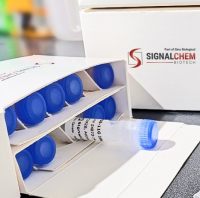Identification of TP53 Mutations in Human Cancers Using Oligonucleotide Microarrays
互联网
736
TP53 mutations are the most common genetic alterations in human malignancies. Since it was first discovered in 1989, more than 1700 different TP53 mutations have been described at more than 310 distinct resides. According to the most recent updated (September 2002) TP53 mutation database (http://www.iarc.fr/p53 ), more than 17,689 somatic mutations and 225 germline mutations have been reported (1 ). Detection of TP53 mutations have the following implications: (1) TP53 mutations cause inactivation of p53 protein, (2) different TP53 mutations are associated with different mechanisms causing the mutation, spontaneous mutations versus chemical carcinogen-induced mutations, and (3) TP53 mutations have been correlated with clinical stage and patient survival and are considered a potential prognostic indicator in some cancers. TP53 is a sensor of genomic stress and is involved in cell cycle control, angiogenesis, apoptosis, and DNA repair pathways. Therefore, detection of TP53 mutations can provide a basis for understanding interactions of other genes with p53.









